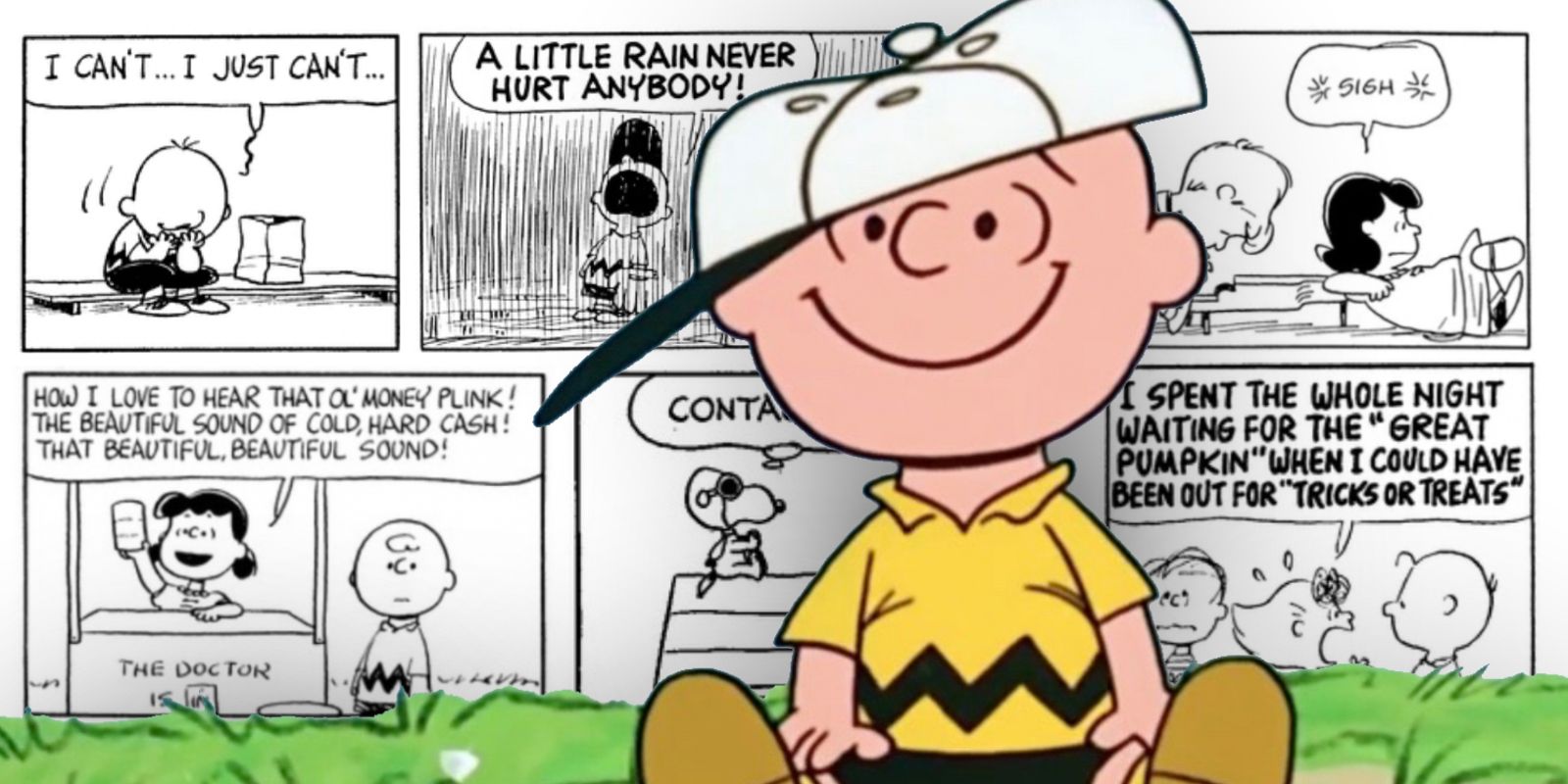
While Charlie Brown, Snoopy, and the rest of the Peanuts gang are deeply associated with American culture, it wasn't until nearly 10 years after their debut that they would adopt many of the traits that came to define the comic strip. The newspaper strip endures as one of the most influential comics in history, and the holiday specials still air on streaming services on TV. With its everlasting importance in Western culture, it's interesting to note when Peanuts first became popular.
Charles M. Schulz introduced Charlie Brown on October 2, 1950. His primary theme from the very beginning of the comic strip is childhood cruelty. The very first comic strip on October 2 has Shermy, Patty (not Peppermint Patty), and Charlie Brown. As Charlie walks by his supposed friends, they acclaim that "Good ol' Charlie Brown" is coming. As soon as Charlie passes by them, Shermy exclaims: "How I hate him!" Schulz's mission was to express the inner sadness of a boy that goes through failure on a constant basis. Though the 1950s was the "Golden Age" for Peanuts, the most iconic moments of the strip really started in the early 1960s.
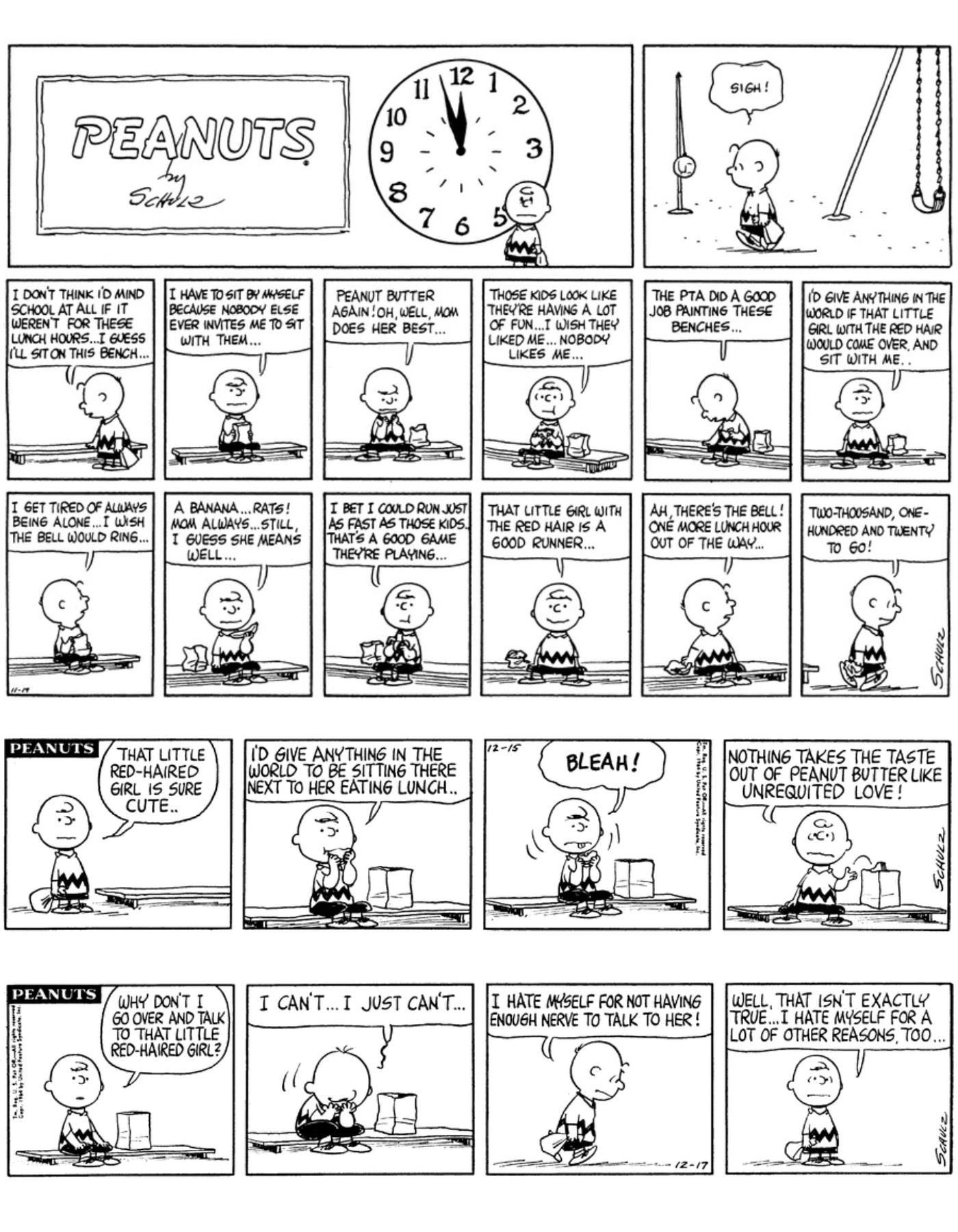
The year 1959 marked a new wave for Peanuts. Charlie Brown's sister, Sally, made her debut on May 26, 1959. Linus also first spoke about the Great Pumpkin in October of 1959. Not only was Schulz inventing new topics for his already popular characters, but his emotional side began to engulf the strip as well. On November 14, 1961, Charlie Brown sat on the bench during lunch for the first time. He talks to himself as he observes the "little girl with the red hair." His only wish is that she would go over and sit with him. These iconic strips continued in the '60s as Charlie felt more and more alone each time. December 17, 1964, includes one of the saddest moments in Peanuts history, where Charlie Brown sinks his round head into his little hands, saying: "I can't... I just can't..."
In a 1997 interview with PBS, Schulz explained that earlier in 1961, he had been listening to Hank Williams songs. While working on the strip, he reflected on when he fell in love with his first (red-haired) girlfriend, Donna Mae Johnson. They dated for three years when Schulz eventually decided to propose in 1950. Johnson, however, told Schulz that she couldn't see him anymore because she wanted to marry her future husband, eventually becoming Donna Mae Wold. In Good Grief: The Story of Charles M. Schulz, he wrote: "I can think of no more emotionally damaging loss than to be turned down by someone whom you love very much. A person who not only turns you down, but almost immediately will marry the victor. What a bitter blow that is."
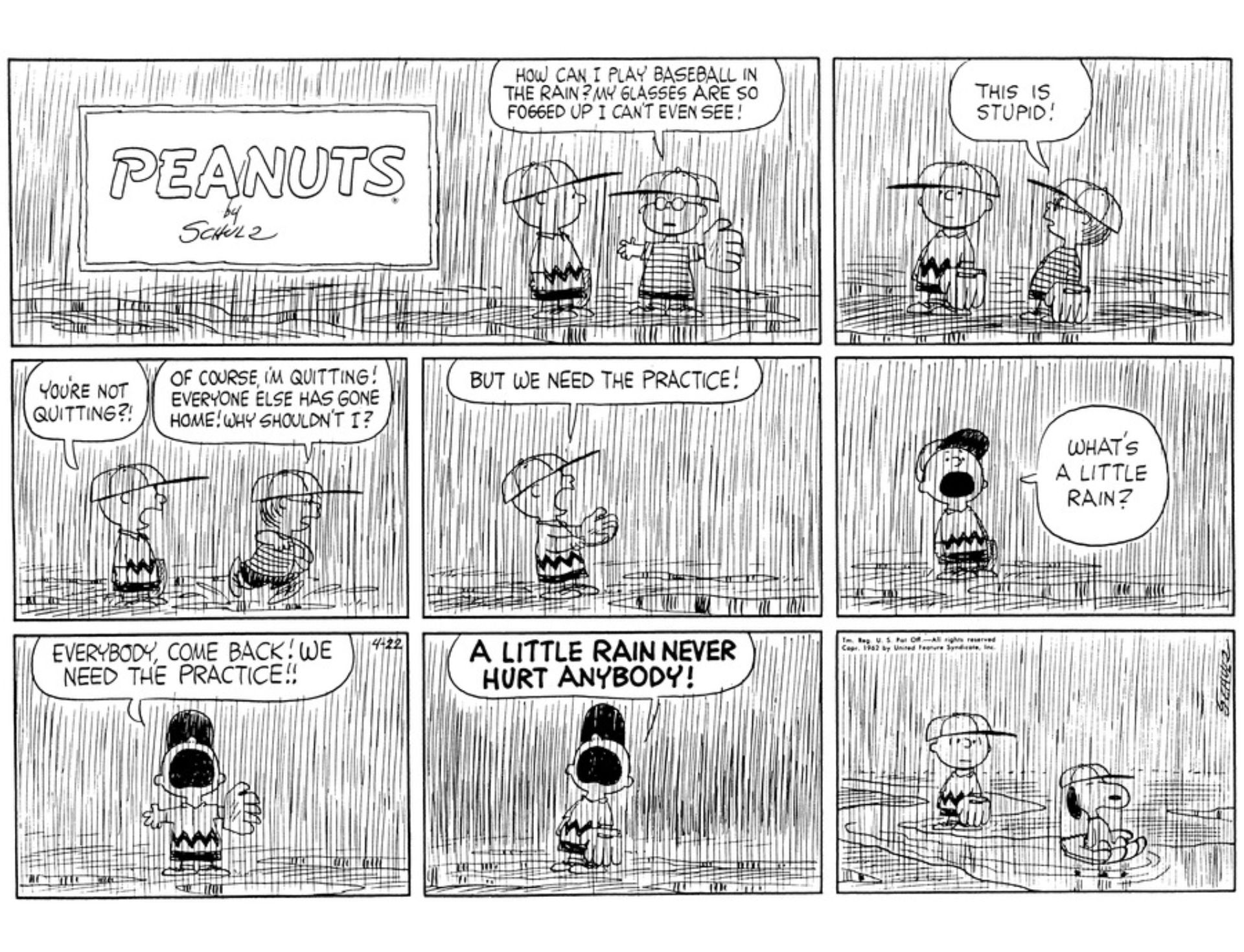
The first Peanuts animated holiday special kept on the depth of the strip in December of 1965. Schulz insisted that A Charlie Brown Christmas must remain faithful to the comic strip. He stated that characters must look the same, the voice actors must be actual children, and there couldn't be a laugh track. Schulz also insisted that Charlie Brown's story should end with the religious meaning of Christmas. CBS, the studio in charge, believed it would be a failure. The special, however, was immediately a success.
The world still associates Peanuts, Charlie Brown, and Snoopy with Christmas. Another one of the things Schulz did in the 1960s was his artistic choices for the weather. Many artists wondered how he made it seem so easy. Schulz himself said that his cartooning was never hard for him. Whether it would snow or rain, the simple strokes of his India ink pen created detailed yet minimalistic environments that inspired other comics, like Jeff Smith's Bone.
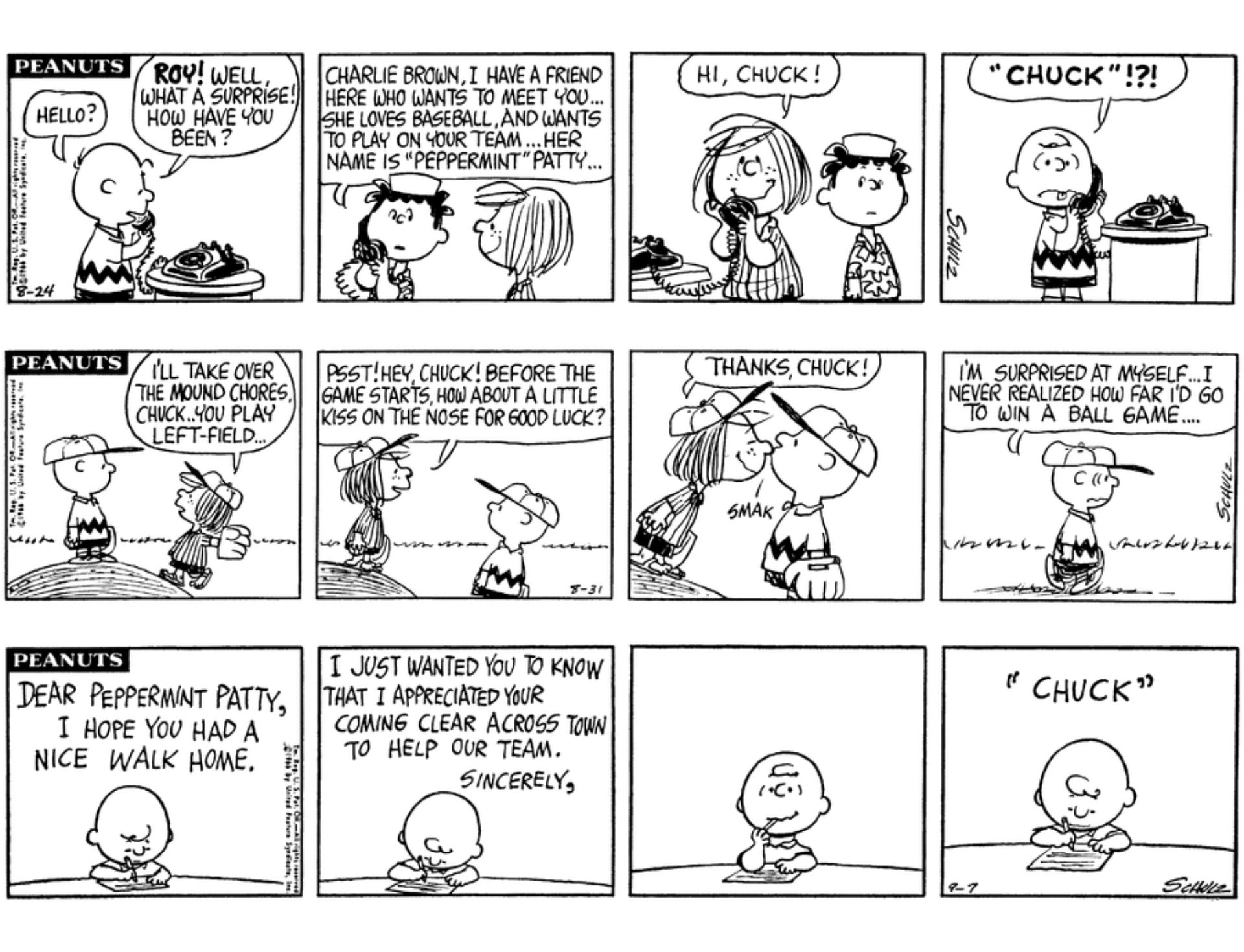
Although the football strips are some of the most iconic Peanuts gags, baseball is the most significant sport that Charlie Brown and his friends play. On April 22, 1962, Charlie Brown's baseball team left him alone as the rain poured over the pitcher's mound. The 1966 adaptation (Charlie Brown's All Stars!) features some of the best baseball moments of the strip. Despite Charlie Brown never being able to win a game, it wasn't all his fault. Lucy constantly misses pop-flies in the outfield, and Snoopy never listens to the rest of the team.
Peppermint Patty also made her debut during a series of strips in August 1966, when she scouts Charlie Brown's baseball team. Her introduction resulted in some of the funniest comic strips of all time. The funniest thing is that she directly contradicts Charlie Brown in every way—everything always ends well for Peppermint Patty. She is also the first to develop a crush on Charlie Brown, which is the only thing she can't accomplish. She also thinks Snoopy is an actual kid with a "funny-looking nose" and infamously calls Charlie Brown "Chuck." Charlie Brown and Peppermint Patty frequently call each other on the phone, and they eventually begin to have deeper conversations against a tree at the park.
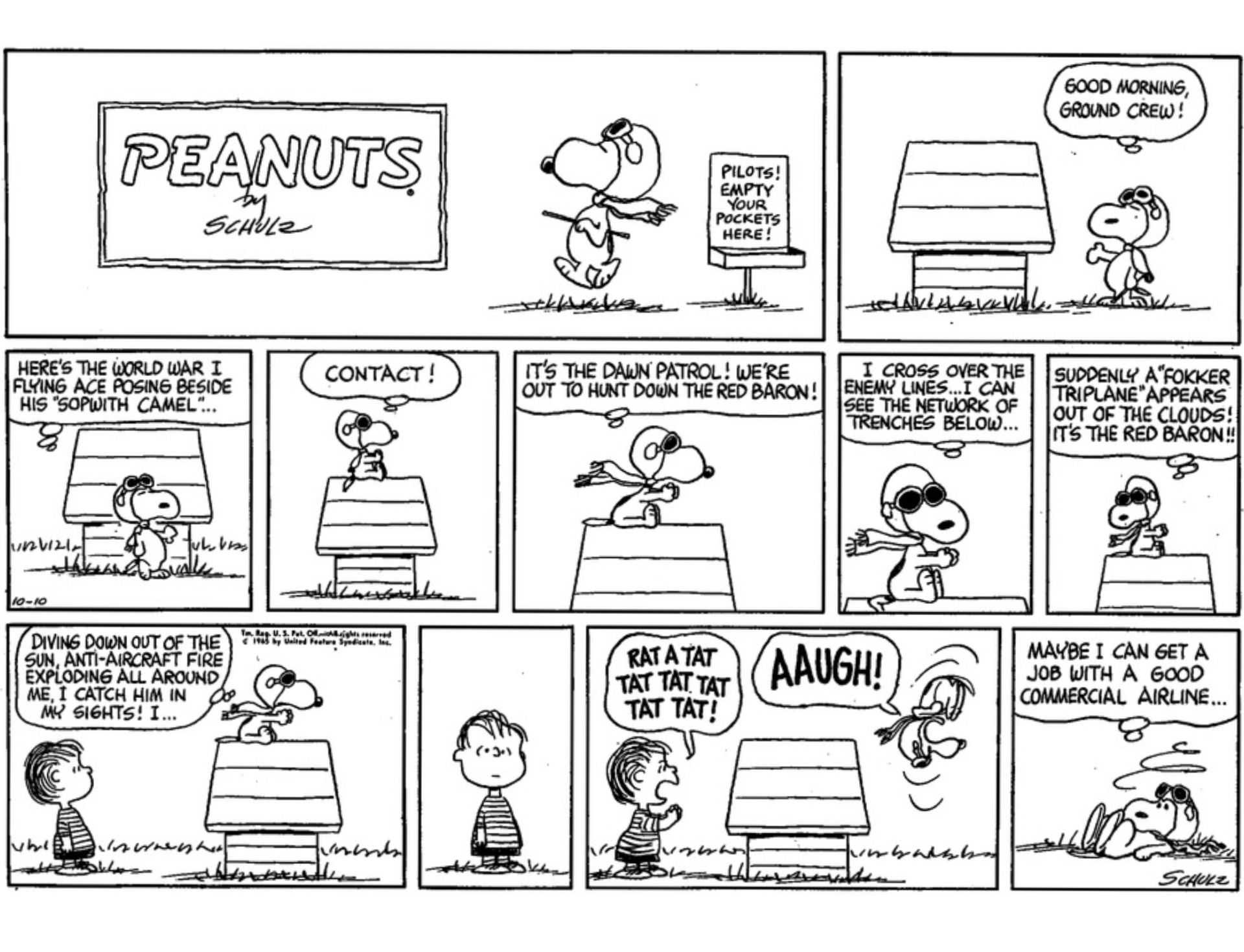
The mid-1960s also saw the growing popularity of Snoopy. His imagination knew no bounds, whether as Charlie Brown's shortstop or as his iconic World War I Flying Ace persona. October 10, 1965, was the first time Snoopy sat on top of his "Sopwith Camel" and hunted down the Red Baron. Fans grew to appreciate the little details of these moments in both the strips and animation. For instance, the bottom of the doghouse is never shown in animated adaptations, causing fans to wonder if Snoopy is flying or not.
In the 1997 interview with PBS, Schulz said that people "forget that it's difficult to be a dog." Schulz gave the example of a golden retriever walking on the street. Schulz presents that dogs must think walking on a leash is the most painful part of their lives. Schulz stated that Snoopy retreats to his fantasies to make his life bearable. Even though Schulz thinks Charlie Brown is a good master, Snoopy isn't satisfied with the standard dog's life.
The 1960s certainly isn't the only good decade for Peanuts, but it's definitely when the strip's voice felt complete. Charlie Brown, Snoopy, Linus, Lucy, and the rest, finally felt like distinguished characters and personalities. Some of these moments put Charlie Brown through a lot of pain, but in the end, they changed him and his friends forever.
from ScreenRant - Feed https://ift.tt/3kVzBDJ
via IFTTT
No comments:
Post a Comment